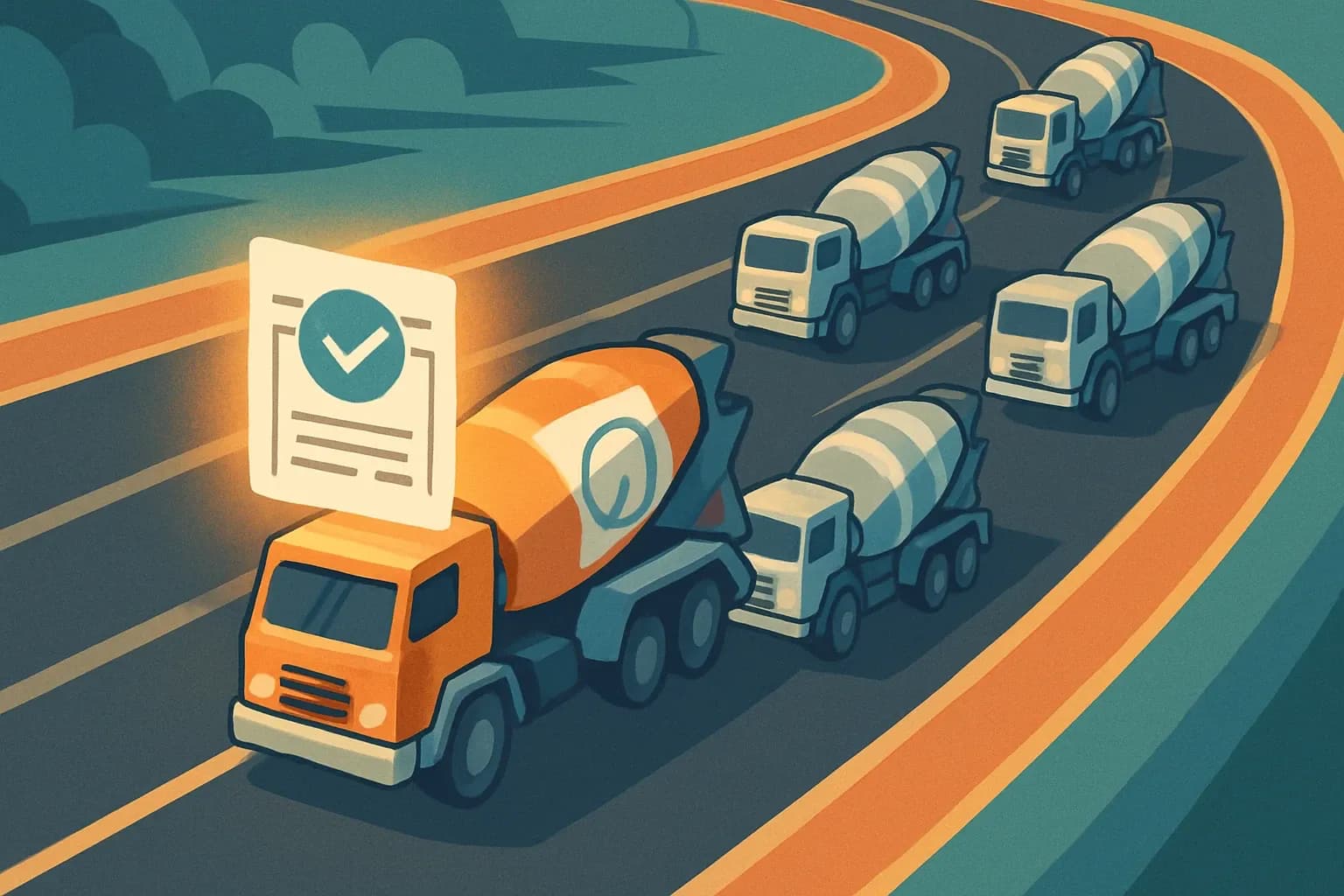Concrete and Asphalt Innovation Act Playbook
The Concrete and Asphalt Innovation Act now moving through Congress could reshape how every U.S. pavement plant wins public work. The bill ties federal grants and incentives to proof of lower embodied carbon, spelling opportunity for manufacturers who already gather airtight LCA data—and headaches for those still hunting spreadsheets. Here is what matters, why EPDs sit center-stage, and how to move before the frenzy starts.


A fast recap for busy plant managers
Introduced in March 2025, the bipartisan Concrete and Asphalt Innovation Act (CAIA) would pump $200 million into R&D and demo projects through 2029 (Congress.gov, 2025). A further $15 million pot reimburses states that buy verified low-emission mixes, sweetened by a 2 percent bonus payment (Congress.gov, 2025). The House IMPACT Act mirrors the text and already cleared a floor vote in late March.
Why Washington suddenly cares about pavement emissions
Cement and asphalt binder collectively drive about 1 – 2 percent of total U.S. greenhouse gases—roughly 25 million cars worth every year (WRI, 2024). Agency heads see a visible, near-term win: greener roads Americans can touch. The CAIA orders the Energy Secretary to craft a cross-agency strategy within one year and publish regional baselines that mark the high-carbon line in the sand.
EPDs are the golden ticket
Section 2(8) writes Environmental Product Declarations directly into statute, defining them as ISO 14025 type III documents that enable apples-to-apples comparison (Congress.gov, 2025). To qualify for state reimbursements, highway specs must already call for EPD-backed reporting tools. No verified EPD, no reimbursement. Easy as that.
A new public directory will put numbers on blast
DOT must build an online directory of low-emission concrete and asphalt submitted by the states. If your mix lands on the list, every transportation engineer from Maine to Maui can see it. If it does not, expect awkward bid meetings.
Timeline gut-check
- Bill introduced: March 13, 2025
- Committee markup expected: Q4 2025 (Coons Press Release, 2025)
- Baseline emission factors due one year after enactment
- First reimbursement grants could flow as early as FY 2027
The window to collect solid 2024 production data and craft EPDs is narrow—better counted in months than years.
What manufacturers should do this quarter
- Pull plant utility and throughput data for the last full calendar year. Gaps now will hurt LCA modeling later.
- Check the PCR choice against competitor declarations. A mismatch can block comparability and the bill’s incentives.
- Line up a white-glove LCA partner who will chase missing spreadsheets so your engineers stay on process tweaks, not paperwork.
- Model a “what-if” scenario showing how low-carbon binders or SCMs affect embodied carbon and operating cost. Use that slide in commercial bids.
Selecting an LCA partner: three non-negotiables
- Data wrangling muscle. The Act’s definition demands cradle-to-gate coverage; partial LCAs will not fly.
- Program-operator fluency. Publishing through Smart EPD or IBU both satisfies the Act, but only if the verifier signs off without rework.
- Speed that shields your spec cycle. Grants will reward early movers, so six-month timelines are yesterday’s news.
Bottom line for your sales forecast
Public buyers soon will ask for the CAIA directory link the same way they now ask for LEED points. Plants with compliant EPDs will step through a door that late adopters are still trying to find. Getting ready is not just an ESG box; it is tomorrow’s revenue pipeline, full stop. (I told you this was important!)
Frequently Asked Questions
Does the Act require every concrete or asphalt product to have an EPD?
Not technically, but any mix lacking an ISO 14025 type III EPD will be ineligible for the state reimbursement and incentive funds created by CAIA, which will likely push agencies to favor declared products.
We already have an EPD published under EN 15804—will that work?
Yes, as long as it is a type III declaration, follows an accepted Product Category Rule, and reports embodied GHG in kg CO₂-e per functional unit. Double-check that your PCR is still current.
How big is the reimbursement pool for states purchasing low-carbon mixes?
The bill authorizes $15 million for FY 2025-2027, covering both incremental cost reimbursements and a 2 percent incentive bonus.
Will the federal baseline use national or regional averages?
The Energy Secretary must publish regional baselines wherever practical, meaning emission targets could be tougher in low-carbon regions and more lenient where clinker or binder production is energy-intensive.
